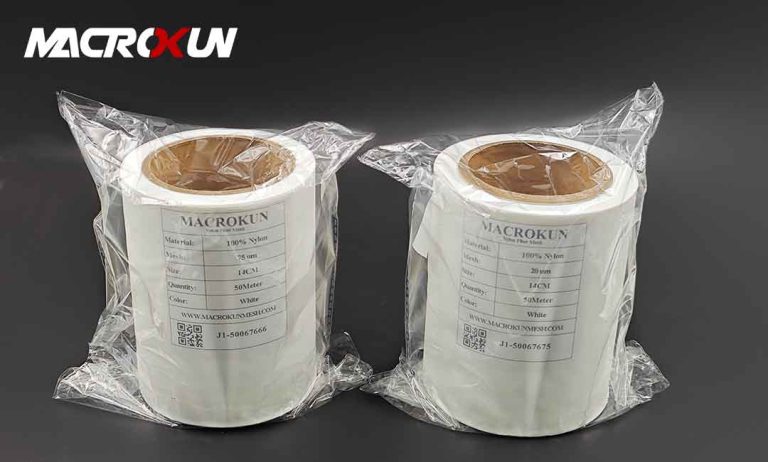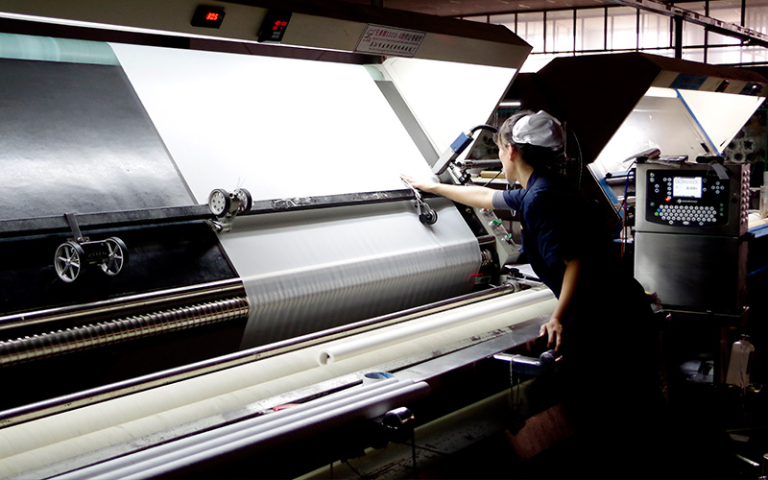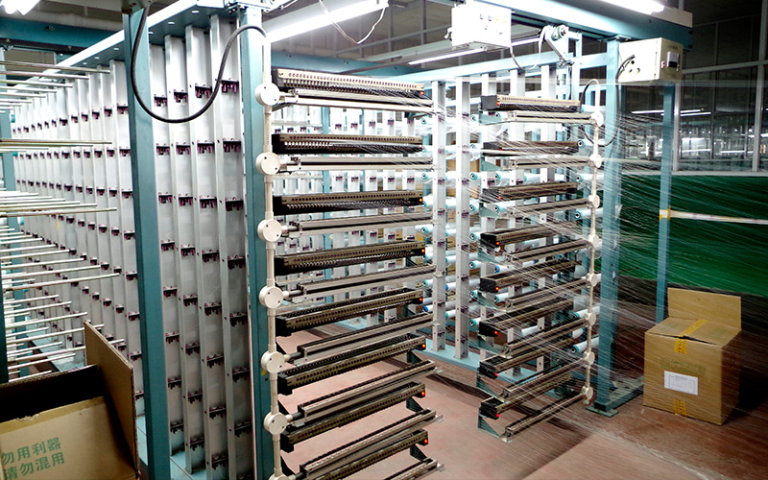Table of Contents
Proper Cleaning Techniques for nylon mesh netting
Nylon mesh netting is a versatile material that is commonly used in a variety of applications, from sports equipment to industrial filters. To ensure that your nylon mesh netting lasts as long as possible, proper maintenance is essential. One of the most important aspects of maintaining nylon mesh netting is cleaning it regularly. In this article, we will discuss some tips for properly cleaning nylon mesh netting to prolong its lifespan.
First and foremost, it is important to remove any debris or dirt from the nylon mesh netting before cleaning it. This can be done by gently shaking the netting or using a soft brush to loosen any particles that may be stuck in the mesh. Once the debris has been removed, the netting can be washed with a mild detergent and warm water. It is important to avoid using harsh chemicals or abrasive cleaners, as these can damage the nylon fibers and reduce the lifespan of the netting.

When washing nylon mesh netting, it is important to be gentle and avoid scrubbing or rubbing the material too vigorously. Instead, gently agitate the netting in the soapy water and allow it to soak for a few minutes to loosen any dirt or grime. After soaking, rinse the netting thoroughly with clean water to remove any soap residue. It is important to ensure that all soap is removed from the netting, as leftover residue can attract dirt and cause the netting to become dirty more quickly.
After washing, it is important to allow the nylon mesh netting to air dry completely before storing or using it again. Hanging the netting in a well-ventilated area is the best way to ensure that it dries quickly and thoroughly. It is important to avoid using heat to dry nylon mesh netting, as this can cause the fibers to become brittle and break down over time. Additionally, it is important to avoid storing wet nylon mesh netting, as this can lead to mold and mildew growth.
In addition to regular cleaning, it is important to inspect nylon mesh netting regularly for any signs of damage or wear. Tears, holes, or fraying edges should be repaired as soon as possible to prevent further damage to the netting. Small tears can often be repaired with a patch or by sewing the edges back together, while larger tears may require more extensive repairs or replacement of the netting.
By following these maintenance tips, you can prolong the life of your nylon mesh netting and ensure that it remains in good condition for years to come. Proper cleaning techniques, regular inspections, and prompt repairs are essential for keeping nylon mesh netting in top condition. With proper care, your nylon mesh netting can continue to serve its intended purpose effectively and efficiently.
Storage Tips to Prevent Damage to Nylon Mesh Netting
Nylon mesh netting is a versatile material that is commonly used in a variety of applications, from sports equipment to industrial purposes. However, like any material, nylon mesh netting requires proper care and maintenance to ensure its longevity and effectiveness. One of the key factors in prolonging the life of nylon mesh netting is proper storage. By following a few simple tips, you can prevent damage to your nylon mesh netting and extend its lifespan.
When storing nylon mesh netting, it is important to keep it in a cool, dry place away from direct sunlight. Exposure to sunlight can cause the nylon fibers to break down over time, leading to weakening and deterioration of the netting. Additionally, moisture can promote the growth of mold and mildew, which can also damage the netting. By storing your nylon mesh netting in a cool, dry place, you can help prevent these issues and keep your netting in good condition.
Another important factor to consider when storing nylon mesh netting is how it is folded or rolled. Improper folding or rolling can cause creases and wrinkles in the netting, which can weaken the fibers and lead to tears and rips. To prevent this, it is best to store nylon mesh netting in a loose, open position. If you must fold the netting, be sure to do so gently and avoid creating sharp creases. Rolling the netting is often a better option, as it can help prevent creases and wrinkles.

In addition to proper storage, it is also important to regularly inspect your nylon mesh netting for any signs of damage. Check for tears, rips, or fraying along the edges of the netting, as well as any areas where the mesh may be stretched or distorted. If you notice any damage, it is important to repair it as soon as possible to prevent further deterioration. Small tears or holes can often be repaired with a patch or adhesive, while larger damage may require more extensive repairs or replacement of the netting.
When cleaning nylon mesh netting, it is important to use gentle, non-abrasive cleaning methods to avoid damaging the fibers. Avoid using harsh chemicals or abrasive cleaners, as these can weaken the nylon fibers and cause them to break down over time. Instead, use a mild detergent and warm water to gently clean the netting, taking care to rinse thoroughly and allow it to air dry completely before storing it.
By following these maintenance tips, you can help prolong the life of your nylon mesh netting and keep it in good condition for years to come. Proper storage, regular inspection, and gentle cleaning are key factors in maintaining the integrity of the netting and preventing damage. With a little care and attention, you can enjoy the benefits of nylon mesh netting for a long time to come.
Regular Inspection and Repair of Nylon Mesh Netting
Nylon mesh netting is a versatile material that is commonly used in a variety of applications, from sports equipment to industrial safety barriers. However, like any material, nylon mesh netting requires regular maintenance to ensure its longevity and effectiveness. By following a few simple maintenance tips, you can prolong the life of your nylon mesh netting and keep it in top condition for years to come.
One of the most important maintenance tasks for nylon mesh netting is regular inspection. By inspecting your netting on a regular basis, you can identify any signs of wear or damage before they become serious issues. Look for tears, holes, or fraying along the edges of the netting, as well as any loose or broken stitching. If you notice any damage, it is important to repair it as soon as possible to prevent further deterioration.
In addition to regular inspections, it is also important to clean your nylon mesh netting regularly. Dirt, debris, and other contaminants can build up on the surface of the netting over time, which can cause it to become less effective and more prone to damage. To clean your netting, simply use a mild detergent and warm water to gently scrub away any dirt or grime. Avoid using harsh chemicals or abrasive cleaners, as these can damage the nylon fibers and weaken the netting.
Another important maintenance tip for nylon mesh netting is to store it properly when not in use. Exposure to sunlight, moisture, and extreme temperatures can all cause damage to nylon mesh netting over time. To prevent this, store your netting in a cool, dry place away from direct sunlight and moisture. If possible, store your netting in a protective cover or container to further protect it from the elements.
If you use your nylon mesh netting outdoors, it is also important to take precautions to protect it from the elements. UV rays from the sun can cause the nylon fibers to break down over time, leading to weakening and deterioration of the netting. To prevent this, consider using a UV-resistant coating or treatment on your netting to help protect it from sun damage. Additionally, consider using a weatherproof cover or tarp to protect your netting from rain, snow, and other harsh weather conditions.
Finally, if you do notice any signs of damage or wear on your nylon mesh netting, it is important to repair it as soon as possible. Small tears or holes can quickly become larger if left untreated, leading to more extensive damage and potentially compromising the effectiveness of the netting. To repair your netting, simply use a needle and thread to stitch up any tears or holes, or use a patch kit to cover larger areas of damage.
By following these simple maintenance tips, you can prolong the life of your nylon mesh netting and keep it in top condition for years to come. Regular inspections, cleaning, proper storage, and prompt repairs are all key to ensuring that your netting remains effective and reliable for whatever application you use it for. With a little care and attention, your nylon mesh netting can continue to serve you well for many years to come.
Avoiding Harsh Chemicals and Abrasive Materials on Nylon Mesh Netting
Nylon mesh netting is a versatile material that is commonly used in a variety of applications, from sports equipment to industrial settings. It is known for its strength, durability, and ability to withstand harsh conditions. However, like any material, nylon mesh netting requires proper care and maintenance to ensure its longevity. One important aspect of maintenance is avoiding the use of harsh chemicals and abrasive materials on the netting.
Harsh chemicals, such as bleach or strong detergents, can cause damage to nylon mesh netting. These chemicals can weaken the fibers of the netting, making it more prone to tears and fraying. Additionally, they can cause discoloration or fading of the netting, which can affect its appearance and overall effectiveness. Therefore, it is important to avoid using these chemicals when cleaning or treating nylon mesh netting.
Instead, it is recommended to use mild, non-abrasive cleaners when cleaning nylon mesh netting. These cleaners should be gentle enough to remove dirt and debris without causing any damage to the netting. A mixture of mild soap and water is often sufficient for cleaning purposes. Simply dip a soft cloth or sponge into the soapy water and gently scrub the netting, being careful not to apply too much pressure. After cleaning, rinse the netting thoroughly with clean water to remove any soap residue.
In addition to avoiding harsh chemicals, it is also important to avoid using abrasive materials on nylon mesh netting. Abrasive materials, such as rough brushes or scouring pads, can cause the netting to become frayed or torn. When cleaning or treating the netting, it is best to use soft materials that will not cause any damage. Microfiber cloths or soft-bristled brushes are ideal for this purpose. These materials will effectively remove dirt and debris without causing any harm to the netting.
Furthermore, it is important to be mindful of the type of clothing or accessories that come into contact with nylon mesh netting. Rough or sharp objects, such as zippers or Velcro, can snag or tear the netting. When wearing clothing or using accessories that have these types of fasteners, it is best to be cautious and avoid rubbing or pulling them against the netting. This will help prevent any unnecessary damage.
In conclusion, proper care and maintenance are essential for prolonging the life of nylon mesh netting. Avoiding the use of harsh chemicals and abrasive materials is crucial in preventing damage to the netting. Instead, opt for mild, non-abrasive cleaners and soft materials when cleaning or treating the netting. Additionally, be mindful of the type of clothing or accessories that come into contact with the netting to prevent any snags or tears. By following these maintenance tips, you can ensure that your nylon mesh netting remains strong, durable, and effective for years to come.
Tips for Handling and Installing Nylon Mesh Netting Safely
Nylon mesh netting is a versatile material that is commonly used in a variety of applications, from sports equipment to industrial safety barriers. However, like any material, nylon mesh netting requires proper care and maintenance to ensure its longevity and effectiveness. By following a few simple tips, you can prolong the life of your nylon mesh netting and keep it in top condition for years to come.

One of the most important things to keep in mind when handling nylon mesh netting is to avoid sharp objects that could puncture or tear the material. When installing or moving the netting, be sure to clear the area of any debris or sharp objects that could cause damage. Additionally, be careful when cutting the netting to size, as using dull or improper tools can result in fraying or uneven edges that weaken the material.
Another key tip for maintaining nylon mesh netting is to regularly inspect it for signs of wear and tear. Check the netting for any holes, tears, or loose threads that could compromise its integrity. If you notice any damage, be sure to repair it promptly to prevent further deterioration. Additionally, be on the lookout for any signs of mold or mildew, which can weaken the material and cause it to deteriorate more quickly.
Proper storage is also essential for prolonging the life of nylon mesh netting. When not in use, store the netting in a cool, dry place away from direct sunlight and moisture. Avoid folding or creasing the netting, as this can cause permanent damage to the material. Instead, roll the netting up loosely and store it in a breathable container to prevent mold and mildew growth.
When installing nylon mesh netting, be sure to follow the manufacturer’s instructions carefully. Use the appropriate hardware and tools to secure the netting in place, and avoid overstretching or pulling on the material. If you are unsure of how to properly install the netting, consult a professional for assistance to ensure that it is done correctly.
Regular cleaning is also important for maintaining nylon mesh netting. To clean the netting, simply rinse it with water and mild soap, then allow it to air dry completely before reinstalling it. Avoid using harsh chemicals or abrasive cleaners, as these can damage the material and reduce its lifespan. Additionally, be sure to remove any debris or dirt from the netting regularly to prevent buildup that can weaken the material over time.
In conclusion, proper care and maintenance are essential for prolonging the life of nylon mesh netting. By following these tips, you can keep your netting in top condition and ensure that it remains effective for years to come. Remember to handle the netting with care, inspect it regularly for damage, store it properly, follow installation instructions, and clean it regularly to keep it in optimal condition. With the right care and attention, your nylon mesh netting can continue to serve its purpose for many years to come.






